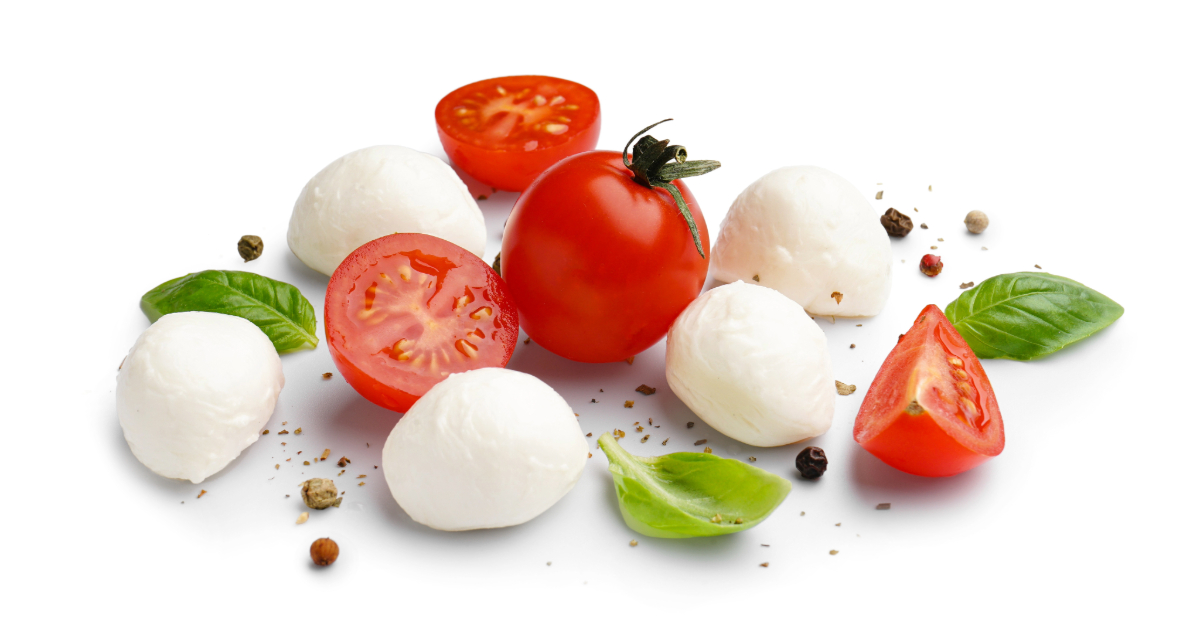Friulano and mozzarella are both Italian-style cheeses made from cow's milk. But while mozzarella is one of the most popular and well-known Italian cheeses, friulano is more obscure.

So what exactly is friulano cheese and how does it compare to the beloved mozzarella?
Friulano Cheese
Friulano is a firm, cow's milk cheese originally made to emulate the flavors of Montasio, an Italian cheese from the Friuli region. Since the name "Montasio" can only be used for cheeses specifically made in that area, the Canadian-made version was given the name "friulano" as a tribute.
Some key characteristics of friulano cheese include:
- Rindless with a yellow interior and surface
- Firm texture, good for grating
- Mild and milky when young
- Becomes nuttier and sharper as it ages
- Named after the Friuli region of Italy, where Montasio comes from
Friulano is a great addition to cheese boards, sandwiches, pasta dishes, and more. The mild flavor when young makes it suitable for snacking, while longer aged versions work well for grating.
Key Takeaway: Friulano is a Canadian-made Italian-style cheese paying tribute to Montasio from Italy's Friuli region. It has a firm texture and mild, nutty flavor.
Mozzarella
In contrast to the relative obscurity of friulano, mozzarella is one of the most popular Italian cheeses. Originating in Italy's Campania region, mozzarella has a history going back over 800 years.
Authentic, traditional mozzarella, also called fior di latte, shares some similarities with friulano:
- Both are made from cow's milk
- Both use a stretched curd method called pasta filata
- Both have mild, milky flavors when fresh
However, there are some key differences as well:
- Mozzarella has a more elastic, pliable texture
- It is lower in fat and calories compared to friulano
- Traditional mozzarella is always white, while friulano is yellow
- Mozzarella also has a much longer history and heritage
Additionally, mozzarella plays a starring role in beloved Italian dishes like pizza and caprese salad. Its popularity extends well beyond Italy itself.
Key Takeaway: Mozzarella is a stretched curd cheese with an 800+ year history originating from Italy's Campania region. It has an elastic texture and mild, milky taste.
Inside the Production Process
Understanding how these cheeses are produced gives further insight into how they differ:
Making Friulano
To make friulano:
- Cow's milk is pasteurized
- Bacterial cultures and rennet are added to set the curd
- The curd is cut, releasing the whey
- The curd is kneaded in hot water to stretch it
- The stretched curd is molded into wheels
- It is aged for at least 2 months up to 18 months
Key aspects of friulano's production include the stretching and molding process to give it that signature firm, grating-friendly texture.
Crafting Mozzarella
For mozzarella:
- Cow's milk is pasteurized
- Bacterial culture and rennet set the curd
- The curd is cut up, draining the whey
- The curd pieces are kneaded and stretched in hot water
- The stretched pieces are molded into balls or braids
- Finally, they are cooled in cold water or brine
So both cheeses use a stretching and molding method. However mozzarella does not undergo aging like friulano does. The cheeseballs are simply cooled and packaged.
Key Takeaway: Both cheeses are stretched and molded during production. But only friulano is aged, while mozzarella is simply stretched, molded, and cooled before being packaged and sold.
Table Comparing Friulano and Mozzarella Production
| Production Step | Friulano | Mozzarella |
|---|---|---|
| Milk Source | Cow's milk | Cow's milk |
| Coagulation Method | Culture + rennet | Culture + rennet |
| Curd Treatment | Cut, kneaded, stretched, molded | Cut, kneaded, stretched molded |
| Final Steps | Aged 2+ months | Cooled in water/brine |
Flavor and Texture Variations
The differences in production lead to noticeable differences in taste and mouthfeel:
Friulano Flavors
When young, friulano is:
- Mild
- Milky
- Clean
Aged friulano becomes:
- Sharper
- Nuttier
- Stronger
Its firm, dense texture makes it great for:
- Grating
- Shredding
- Sandwiches
Mozzarella Tastes and Textures
In comparison, fresh mozzarella is:
- Milder and more delicate
- Creamy rather than dense
- Milky with subtle salty notes
- Elastic and pliable
This elasticity lends itself well to:
- Melting smoothly
- Stringing in dishes like pizza
- Contrasting with the crispness of vegetables
So while young friulano and mozzarella share some traits, the aging process gives friulano a fuller, sharper flavor in comparison.
Key Takeaway: Young friulano and mozzarella both have mild, milky flavors. But friulano develops a sharper, nuttier taste with aging while mozzarella maintains its delicate, subtly salty flavor.
Pairing with Food and Wine
The flavors and textures of these two cheeses make them suited for different food and wine pairings.
Complementing Friulano
Aged, full-flavored friulano pairs nicely with:
- Fruity white wines like Chardonnay
- Oaked Chardonnays
- Dry red wines such as Syrah, Grenache, and Carignan
- Pasta dishes, pizza
Its density stands up well to red sauce while still melting smoothly. And it balances sweeter flavors without overpowering them.
Perfect Partners for Mozzarella
Fresh mozzarella goes well with:
- Sparkling wines and light whites like Pinot Grigio
- Fresh vegetables and herbs
- Tomato-based dishes
- Pesto
The mild milky notes pair beautifully with the acidity of wines like Pinot Grigio. And its silkiness complements fresh produce without obscuring their crisp textures.
Key Takeaway: Aged friulano matches well with fuller white wines and pastas in red sauce. Mild mozzarella pairs nicely with acidic white wines and fresh vegetables.
Table Comparing Friulano and Mozzarella Pairings
| Pairing Type | Friulano | Mozzarella |
|---|---|---|
| Wine | Chardonnay, dry reds | Sparkling, Pinot Grigio |
| Food | Pastas, pizza | Fresh vegetables, pesto |
Which Cheese Should I Choose?
With all of their differences and similarities in mind, which cheese is best for what?
Choose aged friulano for:
- Nutty, robust flavor
- Grating over pastas and pizza
- Holding its own with red sauce
Go for fresh mozzarella when you want:
- Delicate milky notes
- Silkiness and stretch
- A perfect match with tomatoes
For the fullest flavor, use a blend: the mildness of mozzarella balanced by the punch of aged friulano is hard to beat!
FAQs
Is friulano cheese better than mozzarella?
No single cheese is truly "better" - it depends on your taste preferences and what dishes you're making! Aged friulano has a fuller flavor, lending itself well to pastas, pizza, and holding up with wine. Delicate mozzarella works beautifully with subtle vegetable dishes and tossing into salads.
Is mozzarella healthier than friulano?
Yes, fresh mozzarella generally has fewer calories and less fat than friulano. Mozzarella's production focuses on simply stretching and shaping the raw curd before packaging. Friulano undergoes a longer aging process where flavor compounds develop, resulting in a richer, heavier cheese.
What's a good mozzarella substitute?
Fresh friulano makes an excellent mozzarella substitute in dishes like caprese salad or margherita pizza. Young friulano has a very similar clean, mild milky taste. While not as pliable as mozzarella, friulano still melts smoothly. For chicken parmesan, substitute with aged friulano for added flavor punch.
Does friulano taste like parmesan?
No, friulano and parmesan (parmigiano-reggiano) are very different. Parmesan has granular texture with intense nutty, savory flavors and crystalline crunch. Friulano starts mild when young then develops fuller nutty notes with age, but maintains a smooth, dense texture. The cheeses make for excellent complements to each other!
Conclusion
While friulano cheese may not have the fame of mozzarella, it deserves more appreciation! This flavorful Italian-style cheese made in Canada offers unique nutty, savory notes that balance and uplift dishes from pizza to pasta.
Its denser texture also lends itself to both snacking and grating uses. Whether combined with mozzarella for fuller flavor or enjoyed on its own, friulano is a delightful addition to any cheese board.

